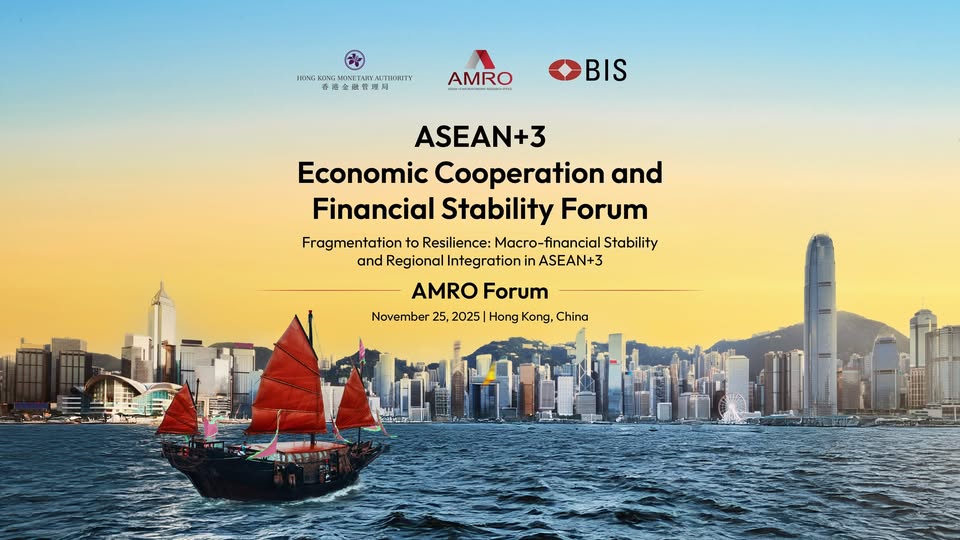
Asian economies need a more integrated capital market to strengthen macro-financial resilience against geopolitical tensions and rising protectionism, a regional forum heard on Tuesday.
In a keynote speech delivered at the 4th ASEAN+3 Economic Cooperation and Financial Stability Forum, Julia Leung, chief executive officer of Hong Kong’s Securities and Futures Commission, said that given all the headwinds that the region is facing, Asian economies should develop a more integrated capital market.
“So together we can turn this disruption into opportunity, division into trust, and global challenges into Asian prosperity,” Leung said.
ASEAN+3 comprises all the 11 members of the Association of Southeast Asian Nations (ASEAN) and their three dialogue partners — China, Japan and South Korea.
The one-day forum in Hong Kong was organized by the Singapore-based ASEAN+3 Macroeconomic Research Office, the Hong Kong Monetary Authority and the Bank for International Settlements.
ALSO READ: China’s role in technology advancement and ASEAN ties highlighted at summit
Under the theme “Fragmentation to Resilience: Macro-financial Stability and Regional Integration in ASEAN+3”, the event called for deeper regional cooperation to navigate rising fragmentation and uncertainty.
Leung said geoeconomic strategies and rising tariffs have reshaped global supply chains, pushing Asian economies to go on “a decisive pivot towards regionalization”.
But she said fragmented liquidity and diverging regulatory cultures pose challenges to a more integrated capital market and this will require regulatory collaboration among Asian economies.
Zeno Ronald Abenoja, deputy governor of the Bangko Sentral ng Pilipinas, the Philippine central bank, said that in terms of trade policies and those related to geopolitical tensions, the Philippines has seen some short-lived initial outflows from financial markets.
“We have seen inflows, but the composition has changed. For the equities market, the inflows were relatively slow in coming but there were more inflows going into the domestic government securities market. Some of this may be related to the monetary policy cycle that was adopted since last year and also to some extent the interest in government securities,” Abenoja said.
READ MORE: UOB: Vietnam leads ASEAN in consumer optimism
Arup Ghosh, chief rates strategist for ASEAN and Korea at Standard Chartered Bank, said ASEAN needs to scale its existing regional payment connectivity system.
“These initiatives can be scaled up further so that not just they meet the requirements of travelers, tourists or foreign workers, but also corporates so that they can settle their outstanding balances, payments in local currencies rather than using the US dollar as an intermediary that adds cost to the process,” Ghosh said.
ASEAN’s regional payment system enables cross-border payments in local currencies via interoperable QR codes. The system is an offshoot of the agreement signed at the 42nd ASEAN Summit held in May 2023 at Labuan Bajo, Indonesia, where the leaders committed to advance regional payment connectivity and promote local currency transactions.
Ghosh said there has been much progress in supporting cross-border payments in ASEAN via fast payment systems, but he noted these systems are more country specific.
“The authorities can actually come up with a more regional application that can house various QR codes and systems that will help travelers and foreign workers to meet their foreign currency needs for spending or remittances,” he said.
READ MORE: China-ASEAN FTA 3.0 seen spurring biz
Kwon Min-soo, deputy governor of Bank of Korea of the Republic of Korea, said the ROK central bank is focusing on how to balance innovation and trust in issuing stablecoins.
Kwon said stablecoins offer clear technological innovation and can streamline cross-border payments. But they also entail risks including depegging, regulatory challenges and “coin runs”.
“In a digital environment, trust can collapse at unprecedented speed. With a single click, billions of coin holders can attempt to redeem simultaneously,” he said, adding that a coin run can spill over into traditional financial markets.
He said given these risks, the ROK central bank’s position is to build a strong institutional framework so innovation can grow safely on the foundation of trust.
“If a Korean-wide stablecoin is introduced, (South) Korean banks should be at the center of issuance, either as issuers themselves or through a consortium led by banks,” Kwon said.
Contact the writer at prime@chinadailyapac.com


